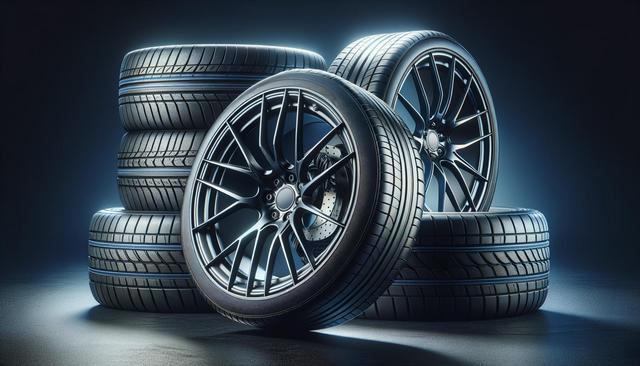Understanding the Types and Sizes of Tires
Tires come in a wide range of types and sizes, each designed for specific driving needs and vehicle types. Whether you’re driving a compact city car, an off-road SUV, or a high-performance sports vehicle, choosing the appropriate tire type is essential. Common tire types include all-season, summer, winter, and performance tires. Each type offers unique benefits that suit different weather conditions and driving styles.
Sizes are represented by a combination of numbers and letters printed on the tire’s sidewall—for example, 205/55R16. This indicates the tire width, aspect ratio, and rim diameter. Choosing the correct size ensures compatibility with your vehicle’s specifications and affects handling, fuel efficiency, and overall safety. It’s important to consult your vehicle’s manual or a tire professional to determine the right size.
Some common types of tires include:
- All-Season Tires: Suitable for year-round use in moderate climates.
- Winter Tires: Designed for improved traction on snow and ice.
- Performance Tires: Offer enhanced handling and speed capabilities.
- Off-Road Tires: Built for rough terrain and uneven surfaces.
Understanding the types and sizes of tires is a critical step in ensuring your vehicle performs well under various driving conditions.
Key Tire Characteristics and Components
Each tire is a complex assembly of various components, all working together to provide grip, support, and durability. The most important tire characteristics include tread pattern, rubber composition, and internal construction. These elements influence how a tire behaves on different surfaces and in varying conditions.
Here are the main components of a tire:
- Tread: The outer layer that contacts the road, designed to provide traction and channel water away.
- Sidewall: Offers lateral stability and protects the internal structure.
- Bead: Ensures the tire remains securely mounted on the wheel rim.
- Carcass: The internal layer made of fabric and steel that supports the tire’s shape and load.
- Belt Plies: Reinforce the tread area and improve strength and handling.
Different tread designs serve different functions, such as improving water displacement in wet conditions or enhancing grip on snowy roads. Rubber compounds also vary by tire type, with softer compounds offering better grip and harder compounds lasting longer. Understanding tire characteristics and components helps drivers make informed decisions when replacing or upgrading tires.
Choosing the Right Tires for Your Car
Selecting the right tires involves more than just fitting the correct size. It’s important to consider your typical driving conditions, climate, and vehicle type. For example, someone living in a region with heavy snowfall during winter might benefit from seasonal tire changes, while a city commuter may prefer the convenience of all-season tires.
When choosing tires, keep the following factors in mind:
- Driving Habits: Do you drive mostly in the city, on highways, or off-road?
- Climate: Are winters in your area harsh or mild?
- Performance Needs: Are you looking for comfort, fuel efficiency, or high-speed handling?
- Budget: While premium tires may offer advanced features, there are also reliable options within moderate price ranges.
Consulting with a professional or using an online tire selector tool can help narrow down your options. Choosing the right tires for your car ensures better handling, improved fuel economy, and a safer ride under various conditions.
Tire Care Tips for Longevity and Safety
Proper tire care is essential to extend the lifespan of your tires and maintain safe driving conditions. Regular maintenance not only saves money over time but also enhances fuel efficiency and performance. Routine checks and timely servicing can prevent common issues such as uneven wear or blowouts.
Here are some essential tire care tips:
- Check Tire Pressure Monthly: Under-inflated tires wear out faster and reduce fuel efficiency.
- Rotate Tires Regularly: Rotating every 6,000 to 8,000 miles ensures even wear across all tires.
- Inspect for Damage: Look for cuts, punctures, or bulges that may indicate internal damage.
- Balance and Align: Unbalanced or misaligned tires can lead to uneven wear and steering issues.
- Keep Tires Clean: Removing road debris and contaminants can prevent premature deterioration.
Following these tire care tips helps maintain optimal tire performance and ensures a smoother, safer driving experience.
When and Why to Replace Your Tires
Knowing when to replace your tires is vital for your safety and vehicle performance. Tires wear out over time, and worn-out tires can lead to reduced traction, longer braking distances, and an increased risk of blowouts. Most tires come with tread wear indicators—small rubber bars that become visible when the tread depth is too low.
Common signs that it’s time to replace your tires include:
- Tread Depth Below 2/32 of an Inch: This is the legal minimum in many areas and a sign that tires are no longer safe.
- Visible Cracks or Bulges: These can indicate structural damage or aging rubber.
- Vibration or Noise: Could suggest uneven wear or internal issues.
- Persistent Loss of Air Pressure: Could point to a slow leak or compromised structure.
Even if tires appear fine, they should typically be replaced every 6–10 years due to natural rubber degradation. Always consult a tire technician if you’re unsure about the condition of your tires.
Conclusion: Making Informed Decisions About Your Tires
Understanding the types and sizes of tires, as well as their characteristics and components, is essential for every vehicle owner. By applying practical tire care tips and choosing the right tires for your car based on your driving needs and environment, you can enhance safety, comfort, and efficiency. Whether you’re replacing old tires or upgrading for seasonal conditions, a well-informed approach ensures that your vehicle performs reliably and safely on the road.







